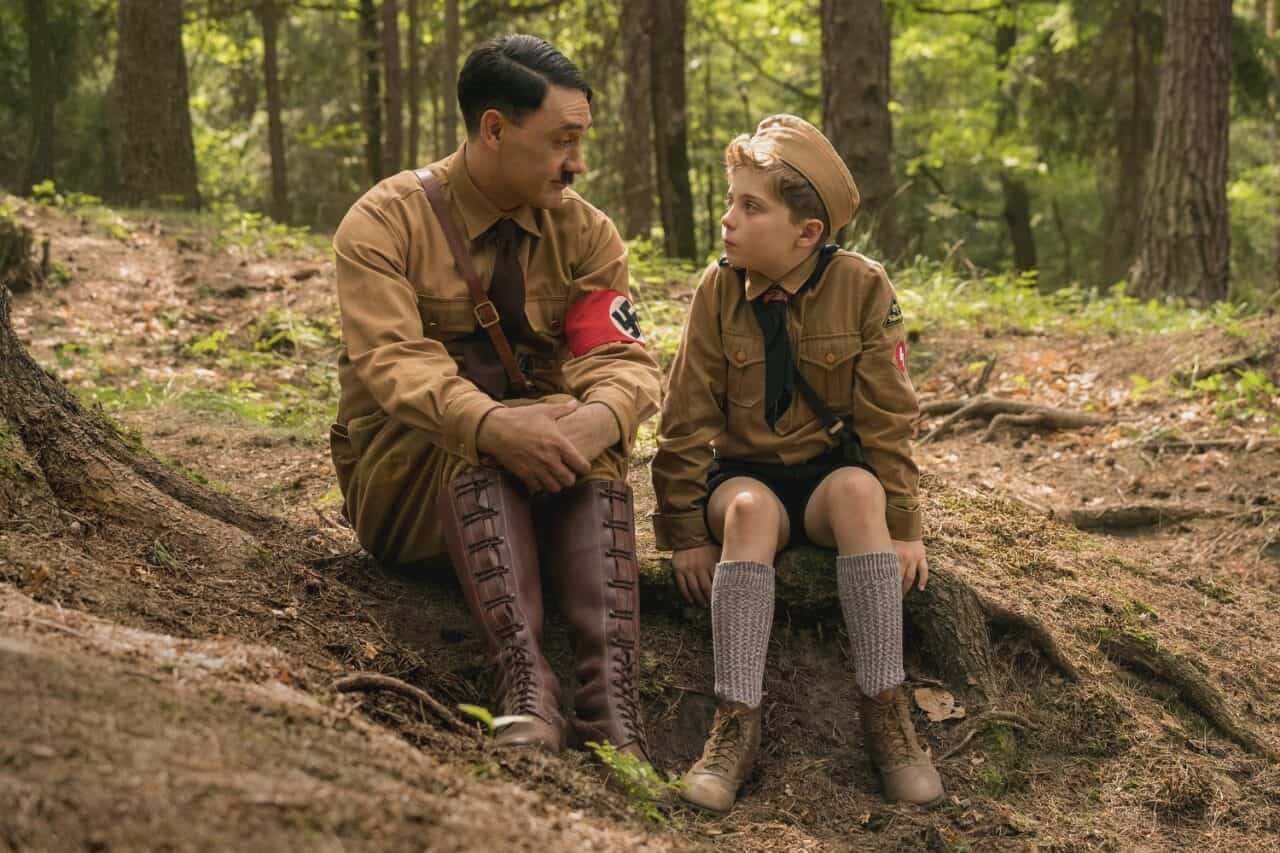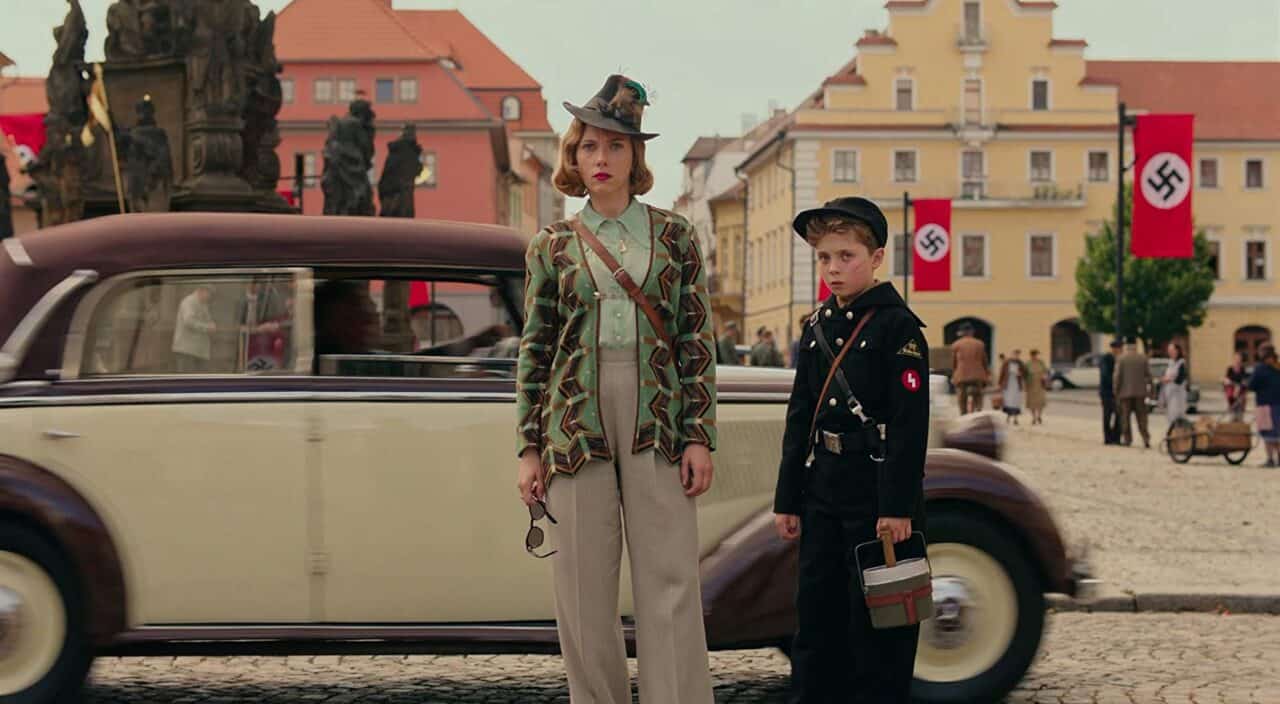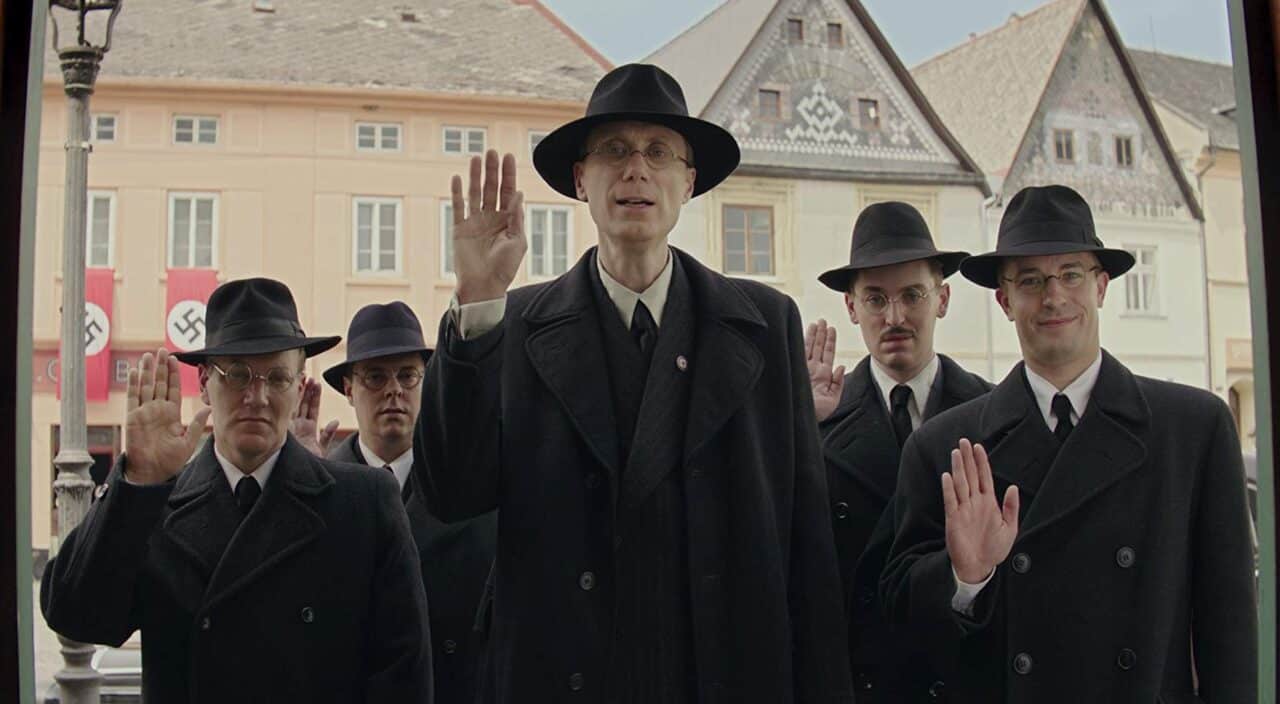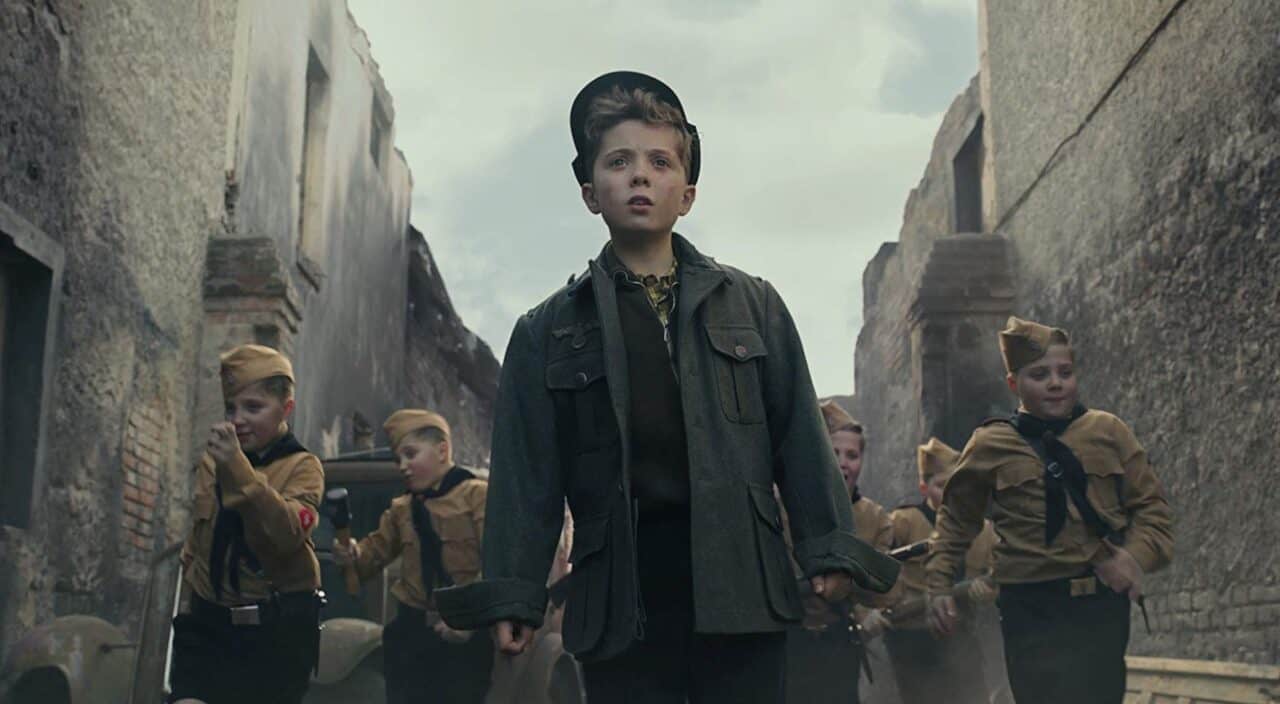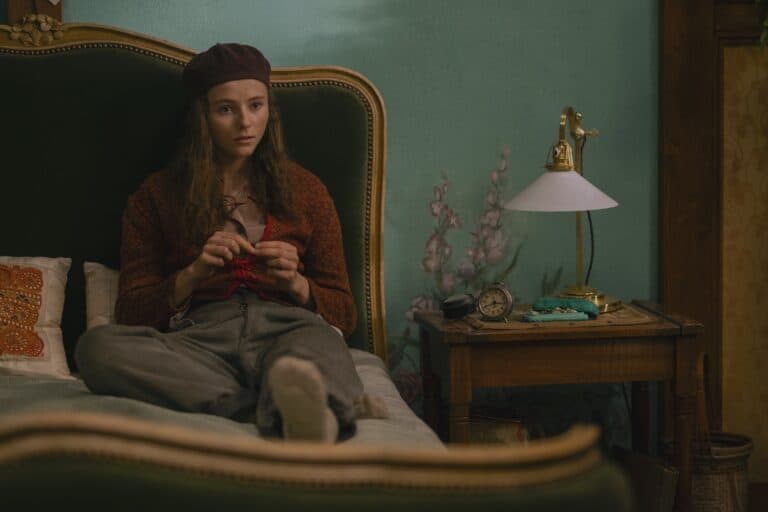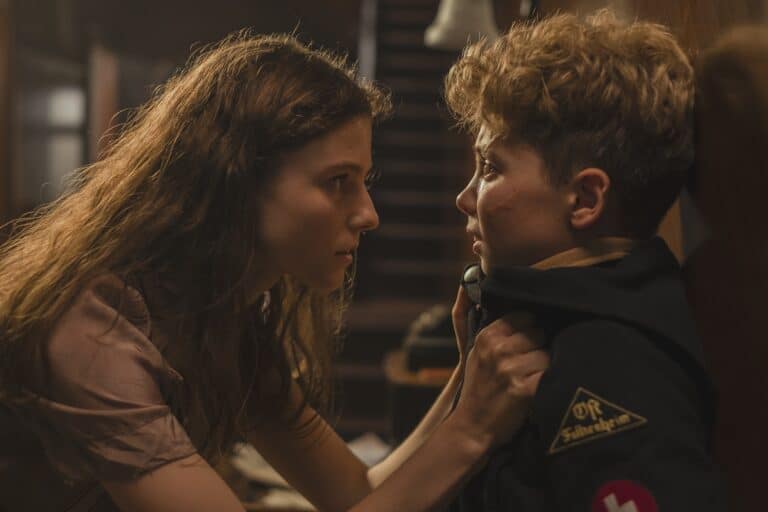«JOJO RABBIT»: DIRECT FORMS OF EXPRESSION DON`T WORK ANY MORE
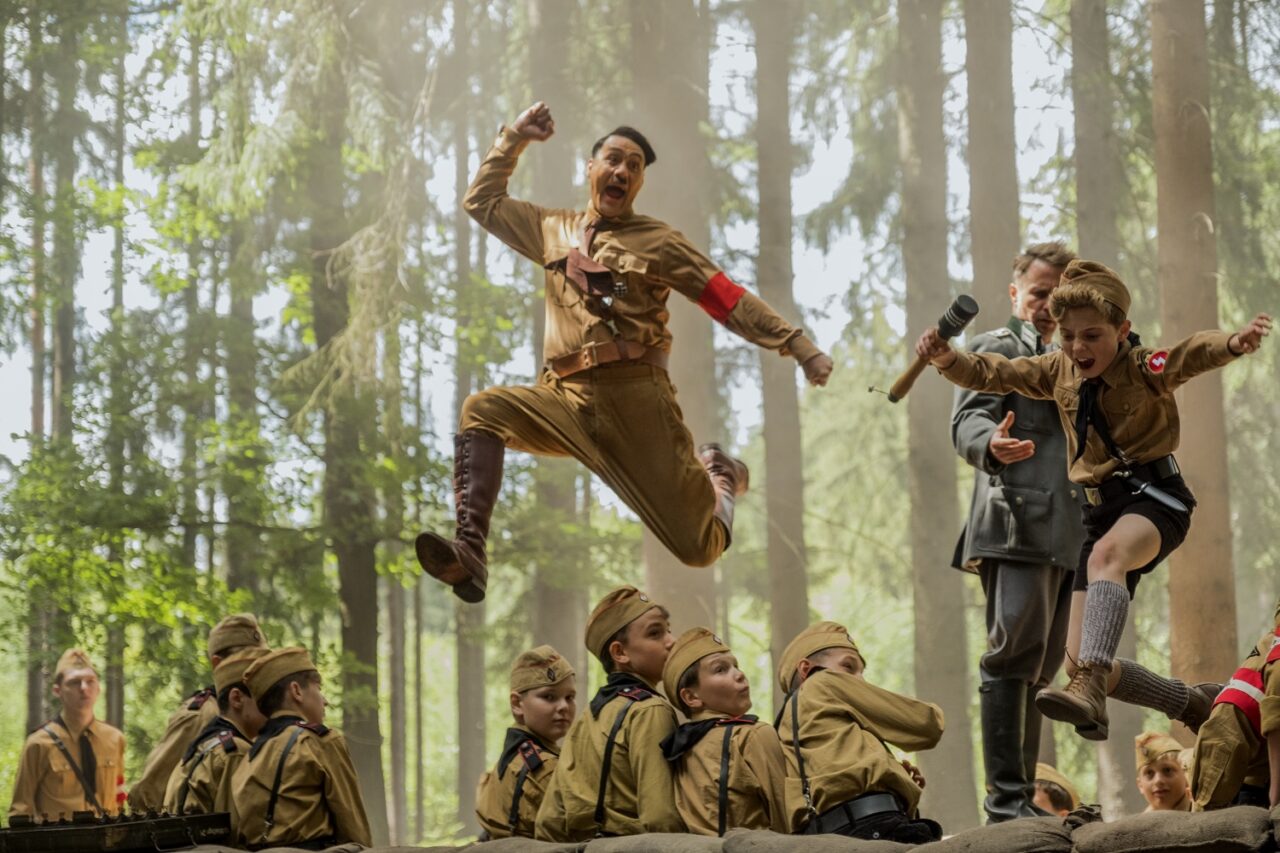
In the public discussion «Do Hitlers Hunt Rabbits? Jojo Rabbit and its look to the past» the curator of the Past / Future / Art project Oksana Dovgopolova and the Head of the Research Division of the Odessa Fine Arts Museum Kirill Lipatov ventured to suggest that Taika Waititi has found a new language of commemoration. Perhaps, “Jojo Rabbit” is now the best family film for talking about World War II. Read how the director managed to combine sincerity with irony and create a modern metamodernist expression.
Oksana: The film “Jojo Rabbit” by the New Zealand director Taika Waititi, was released in 2019 and was screened in Ukraine in early 2020. The film’s genre is described by the director as an anti-hate satire. The film is based on the book by Christine Leunens “Caging Skies” and it is not a comic novel. The events take place during the last six months of World War II. The protagonist is the ten-year-old Johannes, who dreams of becoming a worthy representative of the Hitler Youth. Johannes’ imaginary friend is Hitler. This is Waititi’s creative contribution to “Caging Skies”. This does not occur in the book. The director, himself, played the imaginary friend. The film is full of intentional chronological asynchronicity, and of mixing of different points of the story.
Certainly, “Jojo Rabbit” is not the first film in which we are invited to laugh at what can only cause absolute terror. We can trace the tradition of such approaches starting with Charlie Chaplin’s “Great Dictator” and Mel Brooks’”Springtime for Hitler”.
Kirill, when we were preparing for this meeting, you called “Jojo Rabbit” the best family film to watch on the World War II memorial dates in 2020. Why is that?
Kirill: I would like to clarify my thesis: this film is one of the few possible films to watch in 2020, moreover for different generations. I believe that the direct statement «Nazism is bad, and life is good» does not work any longer, therefore, discussing problems of public history and representation of traumatic experience, we, together with you and Lydia Starodubtseva, have tried to identify modern languages of commemoration (referring to a discussion “Commemorative Practices in the Digital World” and “Digital as Public” — note by Past / Future / Art). Two of our conversations dealt with attempts to go through this experience artificially, and today we’re going to try to talk about the new language of artistic expression.
When I watched the film “Jojo Rabbit”, of course, I decided to look at the literary basis. I read Christine Leunens “Caging Skies” and was surprised by how Leunens’ novel does not match the film. Of course, the main events and characters are the same, but the rhetorical devices and the tropology of the film and the novel are completely different.
Reduced to simple opposition, the novel is a modernist novel about children’s experiences, and it refers to “The Tin Drum” by Günter Grass (this is where the beginning and end of the war of two children are framed: one from Danzig, the other from Vienna), while the film is, of course, a modern metamodernist expression with its own language. The film superimposes rhetoric and tropes on top of a modernist structure common for dozens of great novels of the 20th century. Therefore the modernist text is transformed into a metamodernist one through literary techniques, not through «what», but «how».
Оksana: The system of rhetorical devices for talking about the Nazis, Hitler, etc. is changing. Let’s talk a little bit about the rhetorical devices that work here. What is the language? How does the language of the Third Reich and totalitarian rhetoric, in general, relate to comedic inversions of the subject?
Кirill: What do I admire about this film? The fact that Waititi works with two languages: first, he is very competent and very precise in the language of the historical epoch, the language of Austria and Germany in 1945; Second, which is considered more natural for a successful director, Waititi works well with the language of film genres. And when this superimposition happens, it creates the effect of a very precise expression. These two mutually exclusive intonations, sincerity and irony, create a metamodern background. The situation of new sincerity and post-irony creates a special language for talking about traumatic experiences by combining irony with sincerity in a very complex set of rhetorical devices.
THE SITUATION OF NEW SINCERITY AND POST-IRONY CREATES A SPECIAL LANGUAGE FOR TALKING ABOUT TRAUMATIC EXPERIENCES
It is worth talking about the language of the epoch. There has been a lot of literature on the subject. I will refer here to Victor Klemperer’s book “The Language of the Third Reich”. He formulated, in fact, the basic principles by which the Nazis changed their language and used it to create a new discursive reality. But this language in many forms has the opposite effect of what the character wants to say.
Adolf Hitler plays the role of an aide in the film, who thinks in a 10-year-old’s argumentation system, but it turns out that this argumentation system is surprisingly synchronous with the argumentation system of the Nazi propaganda. For example, in the case of what to do with this discovered beyond-the-wall «creature» as they call it, the arguments of both are equally absurd. Except, Hitler’s proposals are more or less realistic for the Nazi regime (“burn down the house and blame Winston Churchill”) and Johannes’s proposals are an example of children’s behaviour in unusual circumstances (“negotiate”).
Waititi works great with the language of the epoch. He also works perfectly well with the language of the film genre. This pastiche blanket of quotations, hyper-quotations, references to the traditions of the mainstream, and elitist films is a situation which we’ve gotten used to in the last 20 years of postmodernism with one exception: in its ethical programme postmodernism does not entail any literal expressions or sincerity.
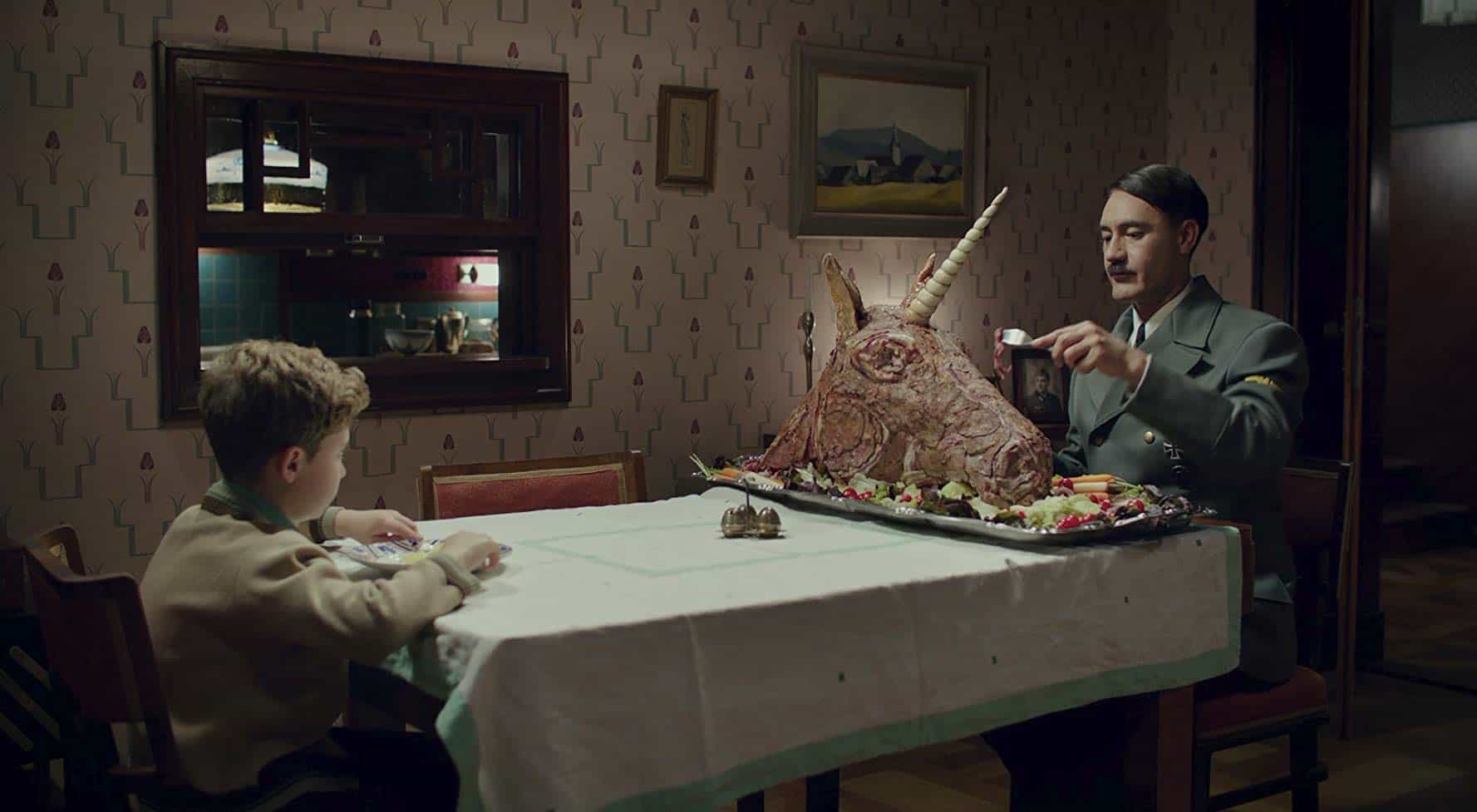
Oksana: It’s not just the rhetoric, is it? Not just the rhetorical devices. When we are talking about the past, we realize that we are talking about something that we cannot perceive directly. Any talk about the past is the work of imagination, the work of building information into certain figures using poetic devices. Hayden White called such figures tropes. “Jojo Rabbit” fits well into a trope marked as irony. How do you see it?
Kirill: The irony is built around two worlds and two characters from these worlds. We have a visible, real world and a fantasy world. The real world of the Third Reich is inhabited by the fictional friend, Adolf Hitler. The fictional world is inhabited by a real character.
The fictional world is the world of the wardrobe, the walls and the children’s horrors. Its character is Elsa Korr, the girl who represents all the ethnic stereotypes, and all the xenophobia that so effectively multiplied in the head of a 10-year-old child. Strictly speaking, the structure of this film is that these worlds change places. These two characters start to fight each other and this game inversion is constantly repeating itself.
Oksana: Kirill, I would like to return to the issue of the few films about World War II to watch in 2020 and the obsolescence of literal expressions. “Jojo Rabbit” turned out to be a surprising match for me. But you and I superimpose that figurative expression on top of a myriad of other literal ones that we have been raised with and which have not gone anywhere. Is such a figurative expression enough for those who have not received such an injection in time? We are full and happy about it but some people, figuratively speaking, might still be hungry.
Kirill: Artistic work with the past meets two challenges. The first is to inform the viewer, consumer — a child or an adult with different cultural backgrounds about the necessary set of facts about the past and the second is to provoke the viewer’s empathy. Everything else is subordinated to these challenges. In the case of “Jojo Rabbit”, both of these tasks are well performed. You can both cry and laugh watching this film. All formal information is taken from it. ‘What a film should tell us about an epoch?’ — is a strange question. A film is not supposed to tell us anything about a specific epoch. It is not a part of compulsory education. It only creates an entrance to this epoch.
Photo: footage from the film “Jojo Rabbit”, directed by Taika Waititi, 2019


